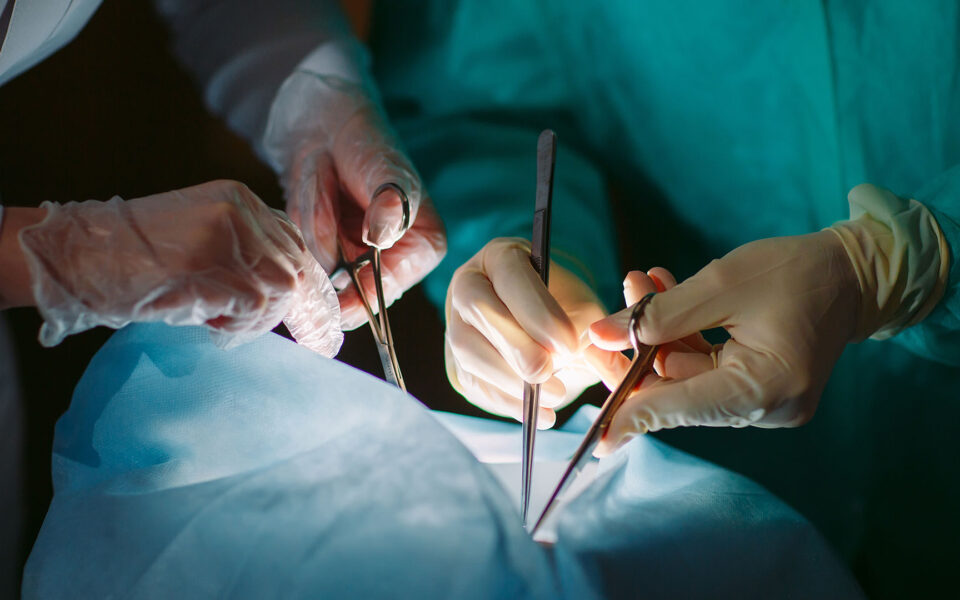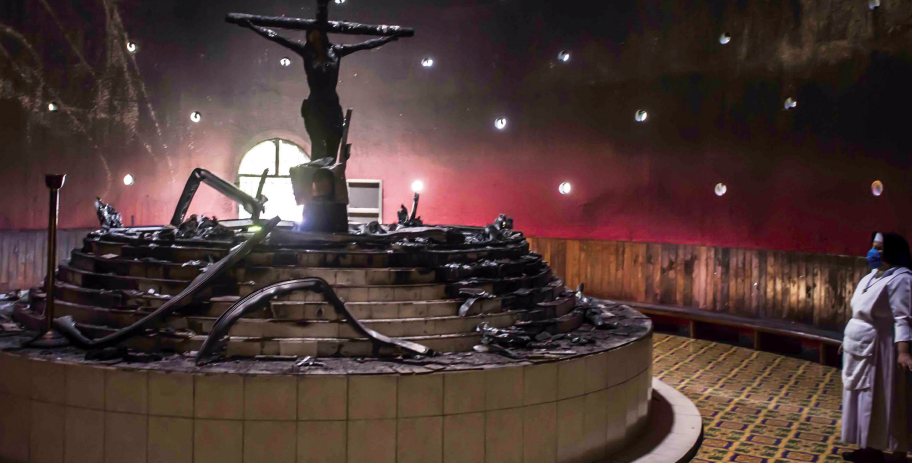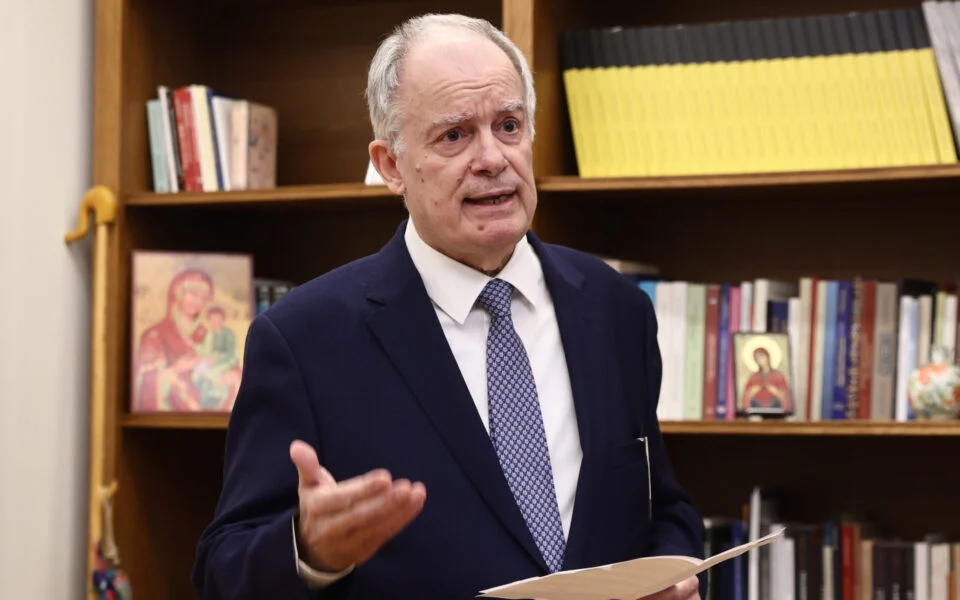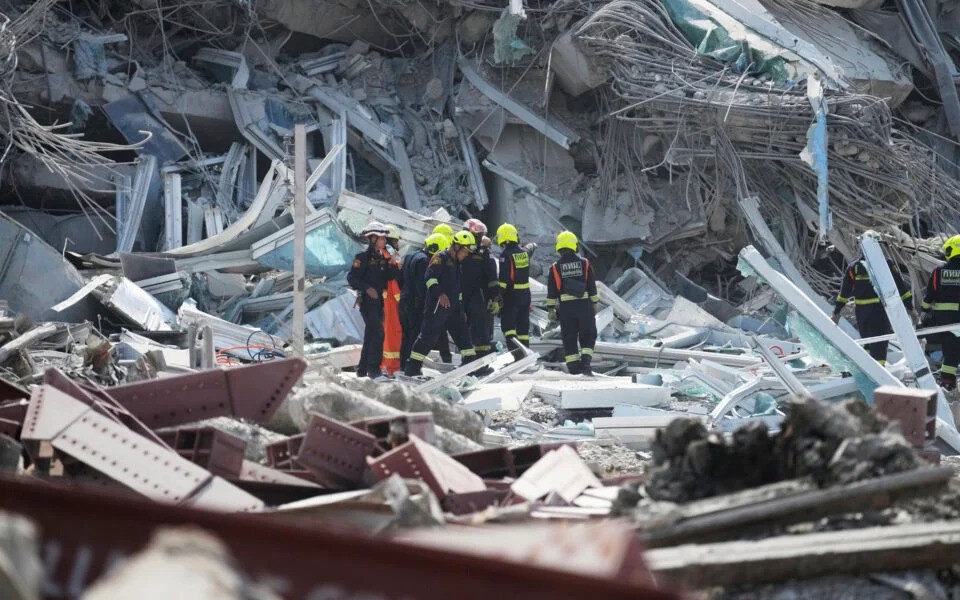Did Covid come from a Wuhan lab? What we know so far

President Joe Biden has ordered US intelligence agencies to conduct a 90-day review of what is known about the origins of Covid-19 and whether it could have escaped from a laboratory in Wuhan. So what does this mean for the lab leak theory?
Has new evidence emerged?
Despite the Biden announcement and various stories in the US media claiming support is growing for the Wuhan lab leak theory, the answer is that surprisingly little has changed in terms of good quality evidence – at least in the public domain.
The most striking new claim in recent days, ahead of Biden’s announcement, was in the Wall Street Journal, which reported that US intelligence agencies were told that three unnamed staff at the Wuhan Institute of Virology (WIV) were sick enough to go hospital in November 2019 with symptoms that might have been coronavirus.
How reliable is the evidence?
The intelligence relating to the three staff at the WIV has been described as uncorroborated evidence from a foreign source, ie it was not obtained – or so far verified – by a US intelligence agency, and was initially looked at under the Trump administration.
“It was very precise,” one source told the WSJ, but added the crucial caveat: “What it didn’t tell you was exactly why they got sick.”
According to the New York Times, not one but two intelligence documents were produced discussing the sick workers, one focused on the three individuals, the second about what was known about the origins of the coronavirus. There are multiple issues, however, with how to interpret this information.
Questions include whether the symptoms seen were of coronavirus or bad flu (or something else) and whether the sickness – if it was coronavirus – was related to work in their lab, or simply suggests that Covid-19 was circulating in the general population in Wuhan a few weeks earlier than assumed.
Biden’s comments, launching the review, are revealing – not least when he said that the US intelligence community does “not believe there is sufficient information” to fully understand the likelihood of different scenarios for explaining the origin of the virus that causes Covid-19.
Biden also revealed that two of the 18 US intelligence agencies lean towards the theory it jumped from an animal species to humans and “one leans more toward” the lab theory, suggesting a striking lack of clarity.
Meanwhile, outside of US intelligence circles, the broad consensus among scientific experts remains that the most likely explanation is that Covid-19 jumped to humans from an animal host in a natural event.
So where are we with the animal host theory?
Much has been made by some of the fact that no intermediate animal host – between humans and bats – has so far been identified, which has been cited in some places as somehow supporting the lab leak theory.
The reality is that identifying animal hosts in past coronavirus outbreaks has been a lengthy and uncertain process. While it is known that dromedaries were a major reservoir host for Mers, even now the role of the animals in transmitting the virus is poorly understood.
The same was true with the Sars outbreak. While civet cats were suspected as intermediate hosts, it took years to confirm. In neither case was there was a suggestion of a lab leak. Because of that, the model of transmission via an intermediate host has remained the predominant one under consideration.
Another issue is that a lot of focus of research into the origins of Covid-19 so far has relied on the very specialised field of the interpretation of gene sequences of the virus, an area that is less accessible to non-experts including journalists.
But wasn’t there a World Health Organization mission to Wuhan to study the origins of Covid-19?
There was indeed. But the terms of reference of that mission, agreed with China, were to study the potential animal origins of the coronavirus, a fact that was well known to the US and other countries.
It did not include provisions for an audit of the WIV laboratory or to look into so-called “gain of function” research at the lab into viruses, which the Chinese are unlikely to have agreed to. During that mission to Wuhan, researchers spent just three hours at the lab.
However, in public comments team members were sceptical of the lab leak theory after their visit, on the basis of what they were allowed to see – although that does not rule other material having been hidden.
And China, as the WHO’s head, Tedros Adhanom Ghebreyesus, made clear, did not provide all the information that many had been hoping for, including full epidemiological data on some 174 early cases.
Why has the lab leak theory come back now?
That’s complicated. The overt hostility of the Trump administration to China, and the way it pushed the lab leak claims, including a dodgy dossier that was doing the rounds last year, made it a pretty tainted source.
The advent of a Biden administration, which is less hostile to China, combined with the limitations in the WHO investigation, created an environment where some have felt able to ask questions about Covid-19’s origins without appearing to buy into Trump-era conspiracies.
However, like the Benghazi attack in 2012, the Wuhan lab leak theory remains something of a cause celebre for the US right in the midst of what is essentially a cold war between the US and China.
In particular, it has been seen as a stick to beat the Biden administration’s handling of it, not least following the decision to close down a state dDepartment group that had been looking into the lab leak theory.
That effort, first reported by CNN, was quietly launched by the then secretary of state, Mike Pompeo, last autumn and reportedly became quickly mired in concern that it was part of a politicised effort by the Trump administration to blame China and cherry-pick facts to prove a theory.
Indeed, one source quoted by CNN was highly critical of the work being done. “They basically conducted it in secret, cutting out the state department’s technical experts and the intelligence community, and then trying to brief certain senior officials in the interagency on their ‘tentative conclusions’ even before they’d let the department leaders they worked for know an investigation was under way at all.”
That sounds familiar …
It does indeed. Many aspects of Wuhan lab leak story have echoes of the search for WMD in the run-up to the Iraq war in 2003 which included efforts to “stove pipe” intelligence analysis to fit the operating theory.
Then as now, experts (then weapons inspectors also under the aegis of a UN body) were sent into a highly obstructive environment amid a highly politicised debate. Leaks of dubious intelligence – some of it provided by third party countries like the infamous Curveball claims – were reported without sufficient scepticism and expert warnings sidelined.
So has the lab leak theory become more credible or not?
The bottom line is that it is still impossible to know with any certainty, as Biden has said.
Lab accidents do happen all the time, meaning that without further evidence a lab leak remains a possibility. The experience of Sars and Mers suggests that coronaviruses do break out naturally and that understanding their origins is difficult.
Chinese obstruction of research into Covid-19’s origins, combined with its own promotion of conspiracy theories over a foreign origin of the disease, make it look like it has something sinister to hide.
As the experience of the Iraq weapons inspectors demonstrated, obstruction can be profoundly misunderstood as suggesting a motive: ie Saddam Hussein was not hiding WMD but had substantially disarmed.
And where we are today, as Adam Taylor put it cleverly in the Washington Post on Thursday, is nowhere close to a resolution.
“Although the resurgent chatter may suggest new clues or proof, the inverse is in fact true. It is the persistent absence of any convincing evidence either for or against the theory that has prompted calls for more investigation.”
Source: The Guardian




